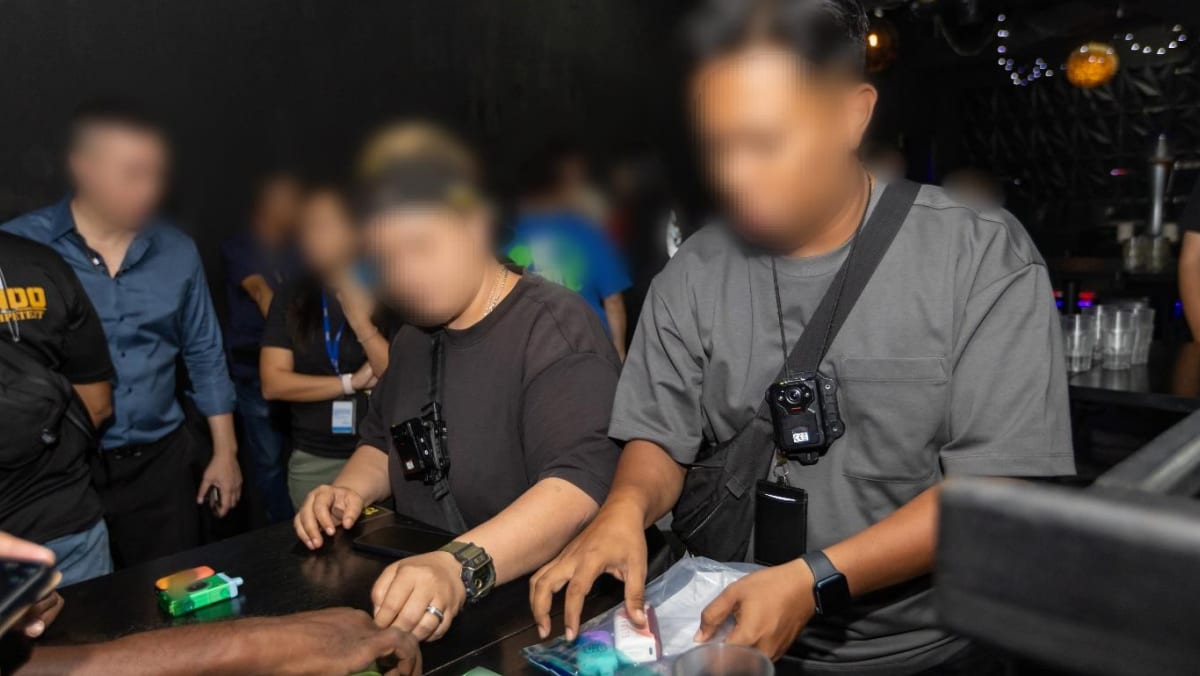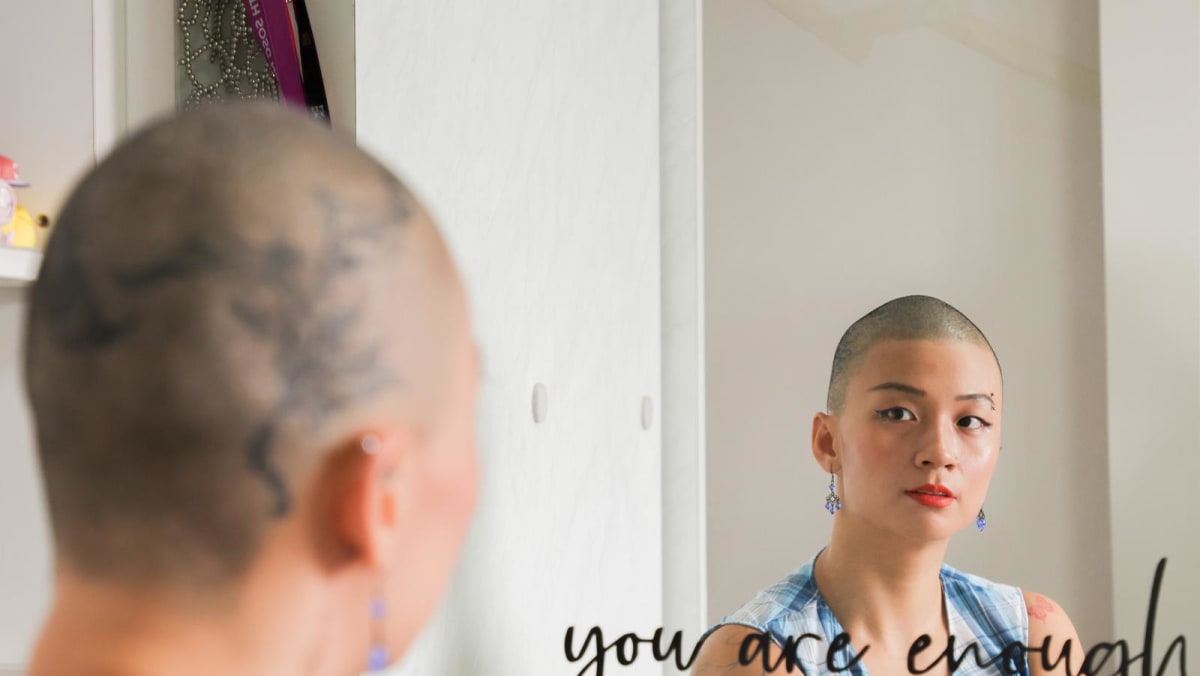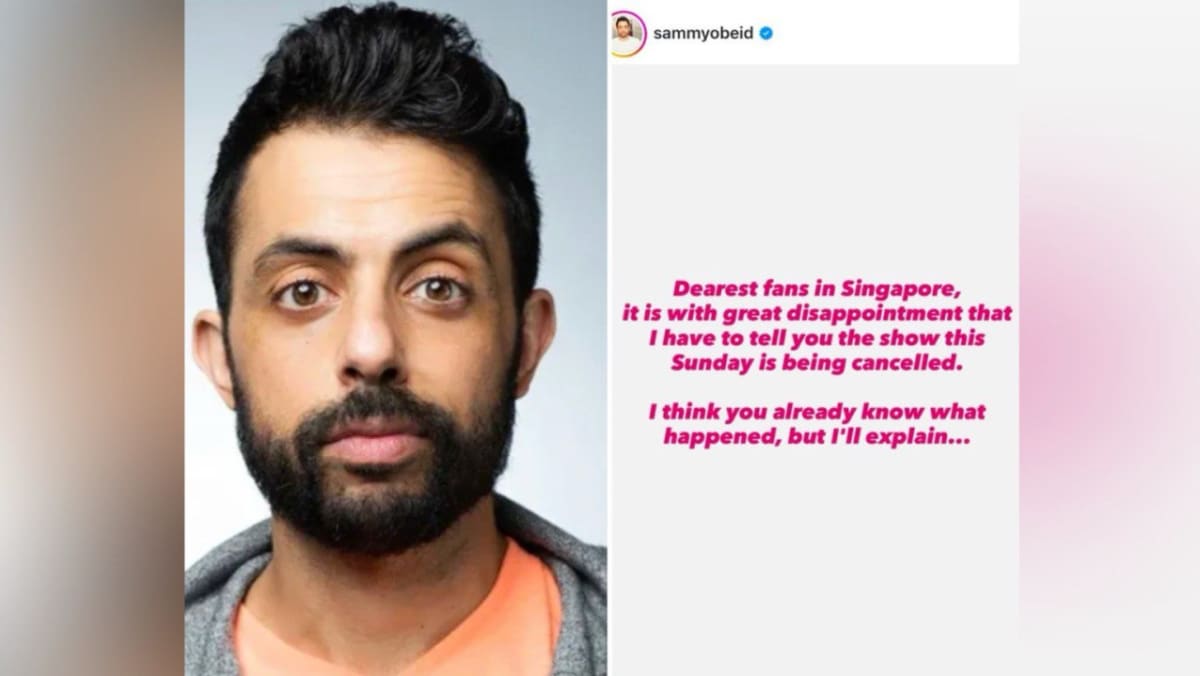For all these years, one option had been presented to her: shaving her head entirely. She’d always resisted doing so in hopes she could recover and overcome the condition.
“To a girl, it’s very scary to shave your head,” Ms Kua said. “I just felt like, wah, I would be super ugly.”
Last October, she bit the bullet and went to the barber to ask for a clean shave.
“At the start, I felt ugly when I looked at my reflection. It was very weird.”
However, it immediately proved to be a significant relief for her trichotillomania. Having no hair to pull greatly reduced the urge to pull. Even when the urge did resurface, it could do no harm.
“After shaving my hair, I couldn’t hide behind the way I looked anymore,” Ms Kua said. “I had to face myself more truthfully and work to redefine what is beautiful to me.”
However, years of pulling her hair out had effectively killed off many of the follicles on her scalp, meaning it was tough for hair to regrow at all.
That same month, she underwent scalp micropigmentation, a cosmetic tattooing procedure that creates the illusion of follicles on one’s head. The procedure typically takes several sessions over weeks or months, depending on how much microblading is needed.
Since then, she has shaved her head weekly.
However, while this solution seemed much more promising, it brought new difficulties.
While her father admires her scalp tattoos and thinks her shaved look is “cool”, her mother has found the change much harder to accept.
For Madam Hoe, who declined to have her full name published, bearing witness to her daughter’s hair-loss struggle has been a source of much despair over the past several years.
“When I see Lynette suffering and in pain, I am also in pain,” Mdm Hoe said. “If I could take over her pain, I would.”
Even after Ms Kua found new relief in shaving her head entirely, Mdm Hoe still longed for her daughter to look, as she once put it, “pretty and gorgeous”.
It has caused moments of friction between mother and daughter. For instance, Ms Kua adamantly refuse to take new photos of herself wearing wigs.
“I didn’t want to any more,” she said. “I told my mum I only want pictures of myself as I am now.”
Smoothing over the tension remains a work in progress, she added. Yet, small gestures suggest a softening: While at the market, her mother will sometimes pick up a scarf for her daughter, so she can have more choices for her bandanas.
Ultimately, Mdm Hoe’s dearest hopes for her daughter are beyond skin deep.
“If she is happy, on the right path and can eke out a living for herself … I would be most proud,” her mother said.
“I COULD MAKE OTHERS FEEL LESS ALONE”
In December 2024, Ms Kua travelled to Thailand to explore living and working as a digital nomad.
With a friend’s encouragement, she began conducting filmed interviews in a spot often frequented by university students.
She would ask them questions about their views on hair and how much it matters in their estimation of a person’s beauty and attractiveness. Finally, she would whip off her bandana to reveal her bald head and watch for their reactions.
She expected awkwardness, pity, even ridicule. Instead, she received empathy from most of her interview subjects.
Some complimented her style, saying she looked like a model. Upon hearing her describe her experience with trichotillomania, one man confessed that he had bipolar disorder.
Her biggest takeaway from the experience? “I learnt that there’s a lot of kindness in the world,” she said.
“A lot of times, no one is judging you. You are just judging yourself.”













